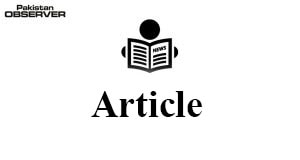Combination of trickle-up & trickle-down economy: A way to prosperity of all
We must understand more than 80% of the population is below the poverty line in Pakistan which translates into 180 million roughly. Therefore, all policies by the government must focus on these poor people..
In a trickle-down economy in which investors and business owners are given tax incentives and loans at low rates with the hope that they will invest more, put up more factories, create jobs and thus money will end up in the hands of the poor.
It does not happen very often because this upper class or investors-class most likely already have enough funds available that they would invest if they wanted to.
This writer’s proposed quasi-socialist economic model or combined trickle-up & trickle-down economic model works the other way around. Any economic policy must be made with the consideration for the working-class and poor at the top priority:
1. Supply-led inflation of edibles must be controlled, which is the main issue in Pakistan. Food items must be produced strategically at the cheapest cost and more than the required quantities.
2. All other things that these people use to live a contentful life must be cheap like electricity, water, gas and petrol.
3. Health and education must be cheap and available at the level any other individual of upper-class avails.
These must be the guidelines for all the policies made in Pakistan. When the working-class people have more money to spend due to the lower cost of living and attainable employment, they will buy products manufactured in the country.
The demand for domestically produced products will go up. These manufacturers will be inclined to invest more and produce more to meet the domestic demand. For them, marginal revenue and marginal profit will increase.
However, interest rates must be kept at a reasonable level so that new investors who want to jump into the free enterprise, will do so and help create new jobs.
Thus, the investors-class will be happier as well with this demand-driven investment. This will render the business cycle as smooth as possible.
Manufacturers/investors will not feel the pressure to increase salaries. Therefore factors of production would remain cheaper. Thus businesses will enjoy a competitive advantage outside the borders as well and they will be able to export more.
This will complete a prosperity cycle. However, it will start from the working-class. The tax base will be enhanced. The government would be able to have more money in its exchequer.
This combination of trickle-up & trickle-down economy will also help the government spend more on its policies as per the guidelines above.










